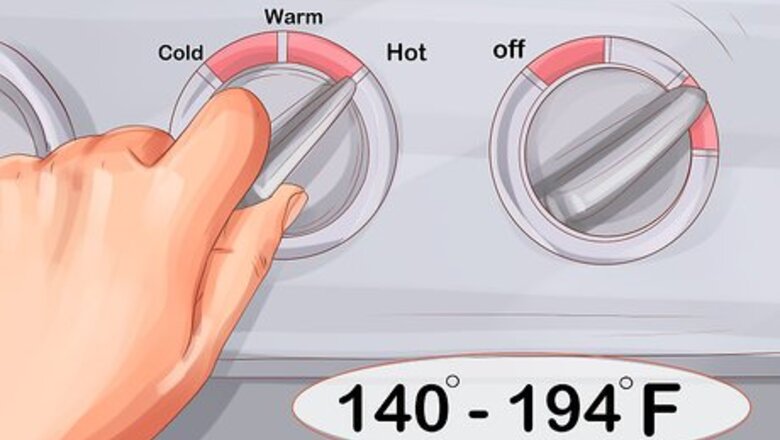
views
Killing Germs in the Washer with Bleach
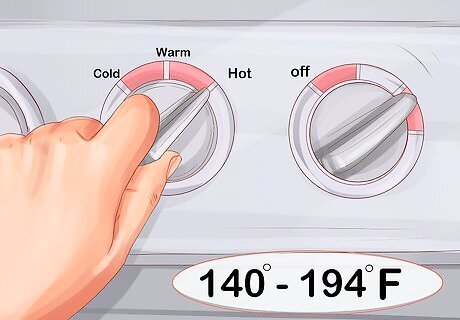
Set the washer to the highest temperature possible. When you’re disinfecting your laundry with bleach, you want to wash at the highest temperature possible. Check your items’ care labels to determine how hot the water you wash them in can be, and use that setting on your washing machine. Hot water, measuring 140 to 194 degrees Fahrenheit (60 to 90 degrees Celsius) is typically only used for white items. Colored items should be washed in cooler water, typically measuring between 86 and 104 degrees Fahrenheit (30 to 40 degrees Celsius). Delicate items usually should be hand washed or washed in a strictly cold water cycle.

Add the usual amount of detergent. Once you’ve set the proper temperature for the water, fill the cap from your detergent with the recommended amount for the size of your load. Pour the detergent directly into the washer’s drum or into the detergent drawer. If you’re not sure where the detergent goes in your washing machine, consult the operating instructions. Front-loading washers usually have a detergent drawer, while top-loading washers usually call for pouring the detergent directly into the washer’s drum.
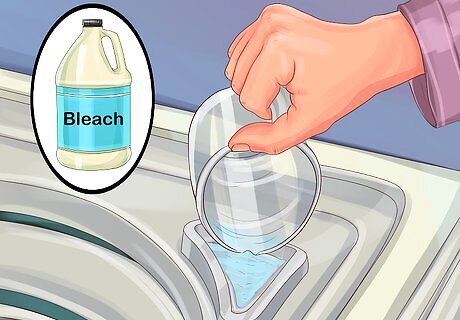
Fill the bleach dispenser in your machine. Consult the instructions on the bottle of bleach to determine how much you should add for the size of your load. Next, pour the bleach into the bleach dispenser. If your washer doesn’t have a bleach dispenser, you can add the bleach directly to the drum. However, you should start the cycle first so water starts to fill the drum before pouring the bleach in. Don’t put laundry in a washer with bleach that hasn’t been diluted first. Pay attention to the type of bleach that you’re using. Chlorine bleach is best for white items, while all-fabric bleach should be used on colored items.

Add your laundry and allow the cycle to run. Once you’ve added the detergent and bleach, place your laundry items in the washer’s drum. Close the lid, and allow the cycle to run through as it normally would. When your items are finished washing, dry them according to their care instructions.
Soaking Items in Bleach to Kill Germs

Combine cold water and bleach. To create a bleach solution to soak your laundry, you need to dilute the bleach with cold water. The amount of bleach that you need depends on how large a load you’re soaking. Add 1 tablespoon (15 ml) of bleach for every 1 gallon (3.8 l) of cold water up to 5 gallons (19 l). Make sure to choose the right bleach for your laundry. Only use chlorine bleach for white items. Use an all-fabric bleach for colored items. Make sure that your laundry has already been washed before soaking it in the bleach.
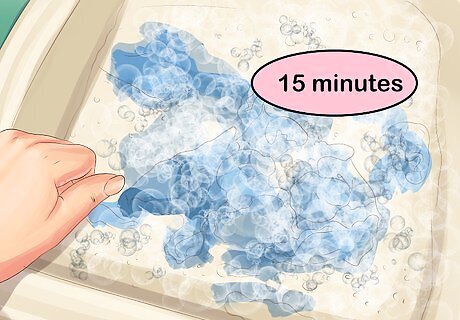
Soak the items in the bleach solution for at least 15 minutes. Once you’ve created the bleach solution, place your laundry in the water. Allow the items to soak in the water for at least 15 minutes. If you’re soaking laundry that is especially prone to germs, such as cloth diapers or an ill person’s bedding, you should let it soak for at least 30 minutes. Never leave the laundry in the bleach solution for more than 45 minutes.
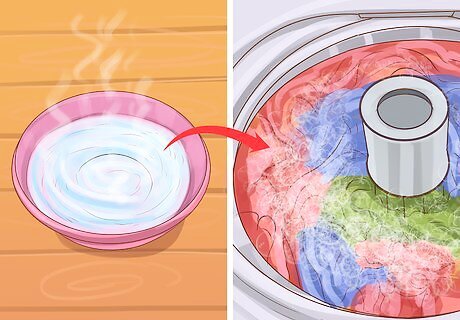
Rinse the items with hot water and wash them in your washer. After your laundry has soaked for the appropriate amount of time, use hot water to rinse them thoroughly. Next, put them in your washer and wash as you normally would with hot water to completely remove the bleach. Be sure to read the care labels on your laundry to verify that they can be washed in hot water. Hot water that's at least 140 °F (60 °C) kills most viruses and bacteria.
Using Non-Bleach Methods to Disinfect Your Laundry
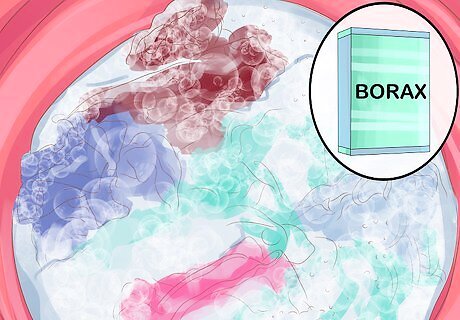
Wash or soak your laundry in hydrogen peroxide and borax. If you don’t want to use bleach to disinfect your laundry, a combination of hydrogen peroxide and borax can also do the trick. You can create a solution to add to a load of laundry or soak your items in it to sanitize them. To wash your laundry with a disinfecting hydrogen peroxide and borax solution, mix 4 cups (960 ml) of hydrogen peroxide and 1 cup (409 g) of borax along with your usual detergent. Make sure to add the mixture to your washer after there’s some water in it, though. Hydrogen peroxide is inexpensive, safe to use on clothes, and highly effective. To soak your laundry in a disinfecting hydrogen peroxide and borax solution, mix 4 cups (960 ml) of hydrogen peroxide and 1 cup (409 g) of borax into a bathtub that’s half full with water. Allow the items to soak for 15 to 30 minutes, rinse in hot water, and then run through a cycle in the washer with hot water. Be careful when using hydrogen peroxide on darker colors. Test it on an area of the fabric that won't be visible before using it.
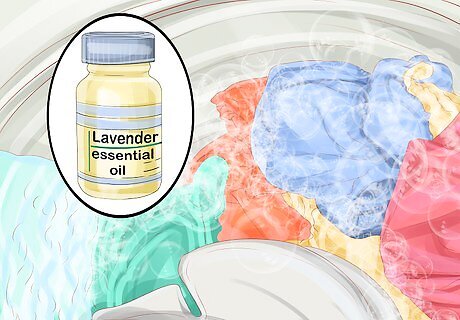
Add tea tree or lavender essential oil to your washing machine cycle. Tea tree oil and lavender essential oil are believed to have natural antifungal, antibacterial, and antimicrobial properties. While you’re doing a regular load in your washing machine add 2 to 3 drops of tea tree essential oil or 1 to 2 drops of lavender essential oil along with your detergent. Allow the cycle to run as normal, and dry the clothes according to the care label when you’re finished washing them. Because tea tree oil and lavender essential oil have fragrances, it’s best to use them with unscented detergent. Try washing your clothes with hot water, which helps sanitize them.










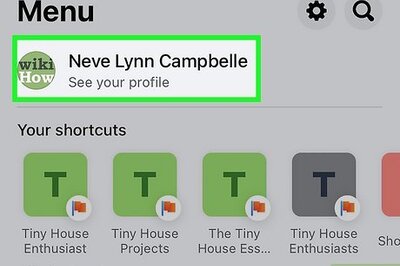
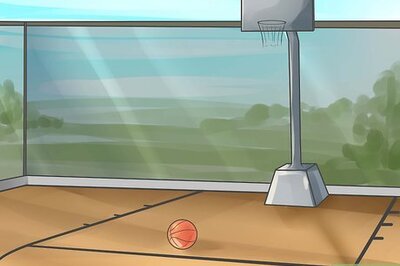






Comments
0 comment